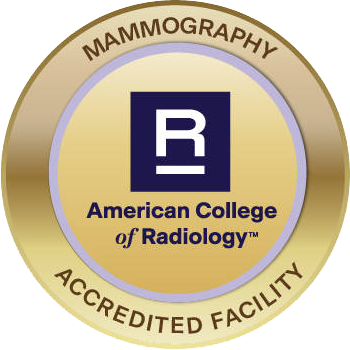4 min Read Time
4 min Read Time
Frisbie Memorial Hospital provides on-site breast imaging services for the Rochester community and surrounding Seacoast area.
Hours: Monday through Friday 7:30am to 4:00pm.
To schedule your screening exam, please call (603) 602-5460
Our breast imaging services include:

The Breast Center at Frisbie Memorial Hospital is accredited through the American College of Radiology. This accreditation ensures that we provide patients the highest level of image quality and safety by demonstrating that our facility meets requirements related to equipment, medical personnel, and quality assurance.
Our team provides a wide range of mammography services, including:
A 3D mammogram (also known as tomosynthesis) allows the radiologist to examine breast tissue one layer at a time. The 3D images also allow fine details within the breast tissue to be more visible, making it easier to detect a tumor early. 3D mammography can show changes in breast tissue before it can be felt. This allows for early diagnoses and treatment when breast cancer is most curable. Ultrasound is complementary to mammography, and provides additional information regarding breast concerns.
We are proud to offer 3D mammography and its many benefits to our patients, including:
A screening mammogram is your annual mammogram done every year. Depending on risk factors, it is recommended for patients 40 years old and older. Sometimes, the radiologist may ask you to come back for follow-up images, called a diagnostic mammogram, to rule out an unclear area in the breast. If there is a breast complaint or concern (such as a lump) that needs to be evaluated, you will need to be scheduled for a diagnostic mammogram.
Schedule Screening Mammogram
You can now schedule a screening mammogram online. For assistance scheduling your screening or diagnostic mammogram please call 603-602-5460.
To prepare for your mammogram:
At Frisbie’s Breast Imaging Center, we understand the anxiety and discomfort that comes with breast imaging. We take great pride in accomplishing high-quality images and balancing that with quick and efficient patient care.
Mammography can be uncomfortable, as we need to hold the anatomy still for a clear image for the radiologist. We look for structures smaller than a grain of sand and just a patient’s heartbeat can cause enough movement on the image to where the fine detail is blurred and no longer visible. We want to work with you and provide the best quality care. If at any point of your exam, you need an adjustment made due to discomfort, please inform the technologist.
Breasts differ in size, shape and density, and often, one breast will be slightly different from its partner. Also, events such as pregnancy and monthly menstrual cycles can change the size and tenderness of the breasts.
Know what is normal for your body. If you detect any of the following signs, don’t delay seeing a doctor:
There are factors you can and cannot control in terms of developing breast cancer. Some factors increasing your breast cancer risk are:
Some controllable risk factors can increase the likelihood of developing breast cancer, such as:
Although male breast cancers are rare (less than 1 percent of breast cancers), the incidence rate has increased by 0.8 percent annually from 1975 to 2008. It is not recommended for men to participate in screening mammography, but a self-exam is appropriate and a diagnostic mammogram might be ordered if a symptom presents.
The primary purpose of bone density testing is to detect osteoporosis. This condition involves a gradual loss of calcium, causing the bones to become thinner, more fragile, and more likely to break. The test is also used to assess your risk for developing fractures or track the effects of treatment for osteoporosis or other conditions that cause bone loss.
Osteoporosis often affects women after menopause but also may be found in men.
A bone density test is simple, painless and takes about 20 minutes. It uses an enhanced form of X-ray technology known as DEXA (dual-energy X-ray absorptiometry) to determine the mineral density of bones and make an accurate diagnosis.
Upon arrival, use the main entrance of the Hospital. Frisbie Memorial Hospital’s Breast Imaging Center is located up one level next to Patient Access (registration).
The address is:
11 Whitehall Road
Rochester, NH 03867
To schedule your screening exam, please call (603) 602-5460.
If you have a breast symptom, please contact your healthcare provider so they can order the appropriate test for you.
4 min Read Time
4 min Read Time